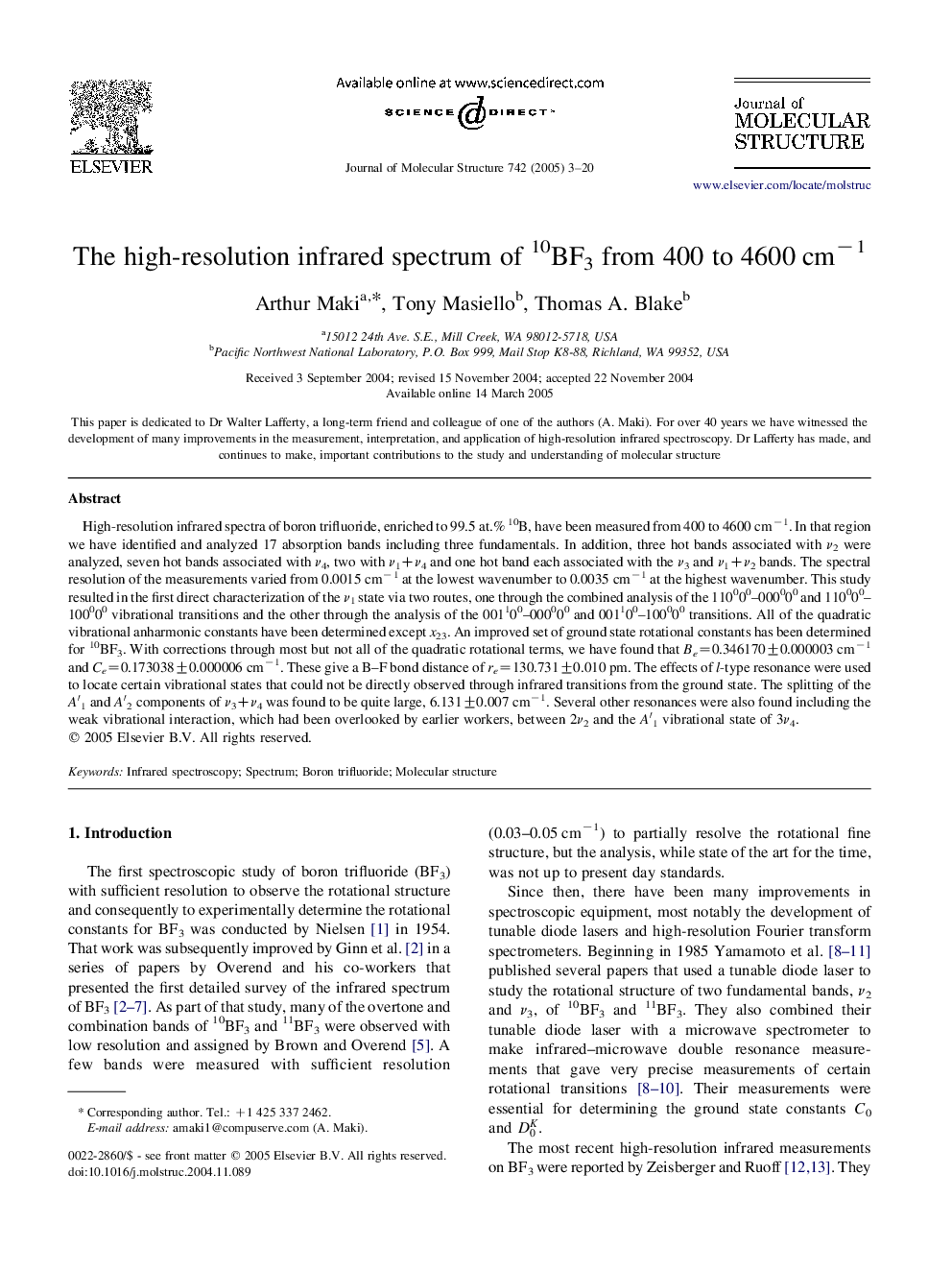| Article ID | Journal | Published Year | Pages | File Type |
|---|---|---|---|---|
| 9770171 | Journal of Molecular Structure | 2005 | 18 Pages |
Abstract
High-resolution infrared spectra of boron trifluoride, enriched to 99.5 at.% 10B, have been measured from 400 to 4600 cmâ1. In that region we have identified and analyzed 17 absorption bands including three fundamentals. In addition, three hot bands associated with ν2 were analyzed, seven hot bands associated with ν4, two with ν1+ν4 and one hot band each associated with the ν3 and ν1+ν2 bands. The spectral resolution of the measurements varied from 0.0015 cmâ1 at the lowest wavenumber to 0.0035 cmâ1 at the highest wavenumber. This study resulted in the first direct characterization of the ν1 state via two routes, one through the combined analysis of the 110000-000000 and 110000-100000 vibrational transitions and the other through the analysis of the 001100-000000 and 001100-100000 transitions. All of the quadratic vibrational anharmonic constants have been determined except x23. An improved set of ground state rotational constants has been determined for 10BF3. With corrections through most but not all of the quadratic rotational terms, we have found that Be=0.346170±0.000003 cmâ1 and Ce=0.173038±0.000006 cmâ1. These give a B-F bond distance of re=130.731±0.010 pm. The effects of l-type resonance were used to locate certain vibrational states that could not be directly observed through infrared transitions from the ground state. The splitting of the Aâ²1 and Aâ²2 components of ν3+ν4 was found to be quite large, 6.131±0.007 cmâ1. Several other resonances were also found including the weak vibrational interaction, which had been overlooked by earlier workers, between 2ν2 and the Aâ²1 vibrational state of 3ν4.
Related Topics
Physical Sciences and Engineering
Chemistry
Organic Chemistry
Authors
Arthur Maki, Tony Masiello, Thomas A. Blake,
